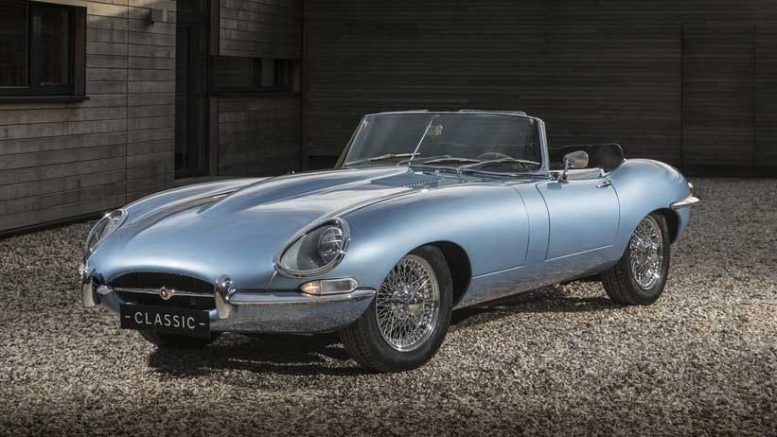Millions watching the royal wedding over the Victoria Day long weekend grinned with delight as Prince Harry and Meghan Markle stepped into a powder-blue Jaguar for their short journey from Windsor Castle to an evening reception hosted by the Prince of Wales at Frogmore House.
But not everyone knew that the stunning convertible — once described by Italian motor racing driver and entrepreneur Enzo Ferrari as “the most beautiful car ever made” — was a Jaguar E-Type Concept Zero, an electric version of the 1968 British classic.
The £350,000 (US$450,000), zero-emissions car is virtually silent and can reach up to 60 miles per hour in five and a half seconds. It has an all-electric, 220 kW lithium-ion power train and uses a 40 kWh battery that can be recharged from home in six to seven hours.
The Duke and Duchess of Sussex’s transportation choice underscores the mounting popularity of electric vehicles in tackling climate change and air pollution.
Across the pond in the U.S., one in five Americans plan to buy an electric vehicle as their next car, according to a May AAA survey. AAA found that 20%, or 50 million Americans, will likely go electric on their next car purchase, up from 15% in 2017.
The survey established that “range anxiety” is starting to lessen, despite the fact that there are only about 16,000 charging stations in the country. “Among those unsure or unwilling to choose an electric vehicle for their next car, 63% (down 9% from 2017) cited not enough places to charge as a detractor, while 58% (down 15% from 2017) expressed concern over running out of charge while driving,” AAA stated. “Not surprisingly, range anxiety is less of a concern for millennials (48%) than Generation X or baby boomers (64% and 66%).” AAA classified millennials as those aged 20 to 37, Generation Xers as 38 to 53 years of age, and baby boomers, 54 to 72.
Greg Brannon, AAA’s director of automotive engineering, said that electric vehicles have “mainstream appeal,” and that although “concern for the environment is still a major motivator,” U.S. drivers “are also attracted to the lower long-term costs and advanced technology features that many of these vehicles offer.”
But electric vehicles need metal for their battery packs, as well as investments in battery-storage technology. Mercom Capital Group, a clean-tech communications and research firm in Austin, Texas, reports that venture capital funds from around the globe invested US$299 million in battery storage in 12 deals during the first quarter of 2018 — up from US$151 million in five deals in the fourth quarter of 2017. The VC deals ranged from energy-storage systems to lithium- and nickel-based batteries. Global VC funds also invested US$75 million in smart-grid technology in seven deals during the first quarter.
One of the Paris Agreement’s goals is to electrically power 20% of all vehicles on the road (i.e., cars, trucks, buses, and two- and three-wheelers) by 2030, and more than 39 automakers have already invested in electric and plug-in hybrid EVs. This will require enormous amounts of lithium, cobalt, nickel and manganese, mining companies say. Cobalt 27 Capital says that by 2030, the EV market could need more than four times the amount of cobalt that is currently produced each year.
The London Metal Exchange (LME) is joining the EV movement, saying it will offer contracts in metals used in batteries within 18 months. Matthew Chamberlain, LME’s chief executive, told participants at May’s LME Asia Week forum in Hong Kong that the new futures contracts could include cobalt sulphate, lithium, graphite and manganese.
Meanwhile, news of a possible multibillion-dollar deal in the lithium space should come as no surprise. Reuters has reported that China’s Tianqi Lithium is close to signing a US$4-billion deal with Nutrien to buy a 24% stake in Chilean lithium producer Sociedad Quimica y Minera. Nutrien, created by the merger of Agrium and Potash Corp. of Saskatchewan, owns 30% of SQM, but has to sell its stake before March 2019 to meet regulatory requirements. Tianqi Lithium is building the world’s biggest lithium processor in Western Australia.


Be the first to comment on "Editorial: Electric vehicles gain traction"